It is well-
| (1) | 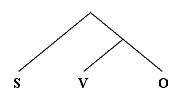 [–head-final] |
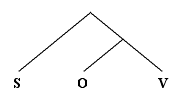 [+head-final] |
An additional parameter, which we may call [±spec-final], can likewise be used to explain VOS and OVS, by governing the placement of the sentence specifier
| (2) |  [–spec-final] |
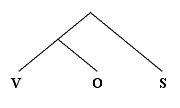 [+spec-final] |
(This model is often known as the “mobile” (/mobil/) model of typology, because the way the tree is flipped around makes it resemble a certain type of kinetic sculpture.) This leaves us with only two remaining word orders: VSO and OSV, which do not fit into this system because it is impossible to separate V and O using only finality parameters. The typical ‘solution’ to this predicament has so far been to abandon any sort of parameters-driven model of typology altogether, and propose a ‘basic word order’, from which all others are derived by transformation (Kayne 1994). This is, of course, extremely unfair (not to mention inelegant), since it implies that some languages are more ‘natural’ (i.e., closer to Deep Structure) than others.
What most people haven’t realized is that it is in fact possible to separate V and O by varying a parameter, if only we allow the joints of the tree to turn in the plane of the paper as well as perpendicularly to it.
Hence, I propose the feature [±predicate-swing], which governs the orientation of the head-
| (3) |
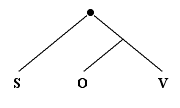
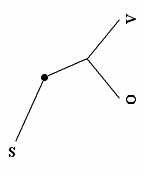 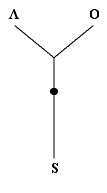
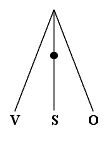 |
(The last step is trivial, since the vertical position of constituents is of no consequence.)
A variant of the system described above could be used to take the place of transformations in analyses of movement phenomena. Rather than having the above features as global parameters that apply across the whole language, if they were instead treated as features of maximal phrases
| (4) | a. Du stahlst die Tür. b. Stahlst du die Tür? |
The above two sentences have the same Deep Structure representation, but in (4b), the lexical item stahl is Enumerated with the features [+head-final] and [+predicate-swing]. Thus, by the Node Labeling Convention, the features migrate up to the root of the tree, causing the contortions illustrated in (1) and (3), respectively, and leaving us with (4b). The reader is invited to consider the more difficult case of “Wer stahl die Tür?”
Feynman, Richard (1985), Surely You’re Joking, Mr. Feynman!
Kayne, Richard (1994), The Antisymmetry of Syntax